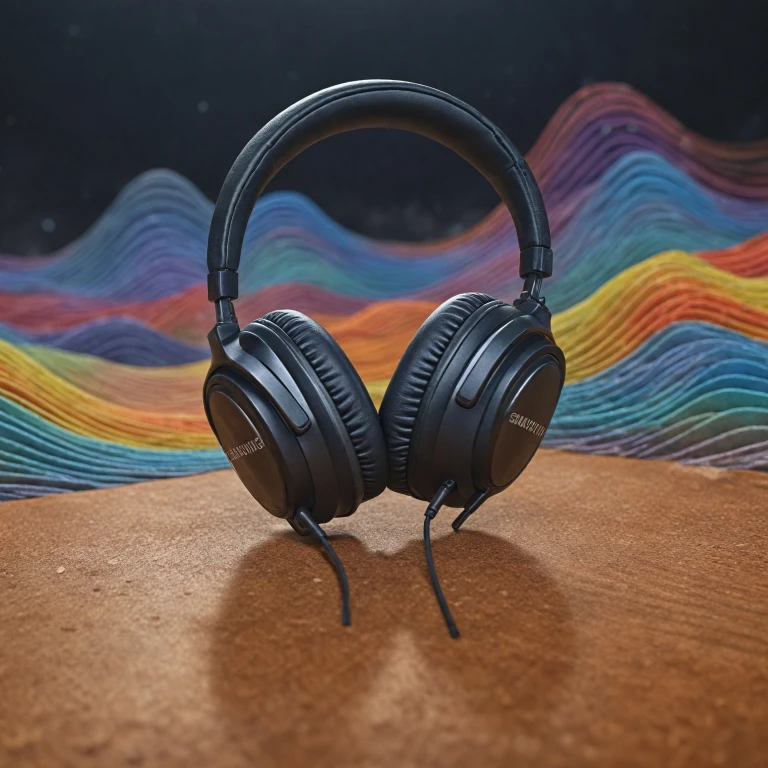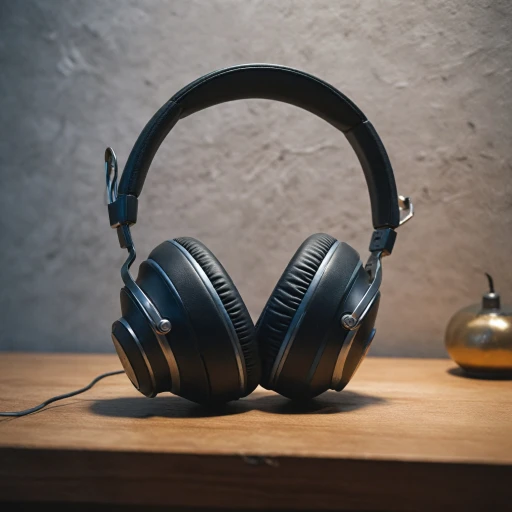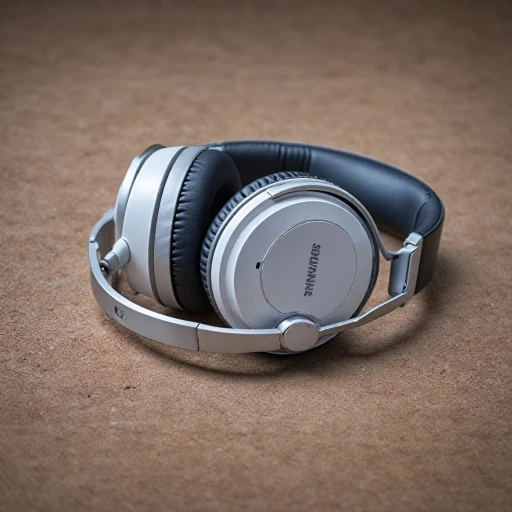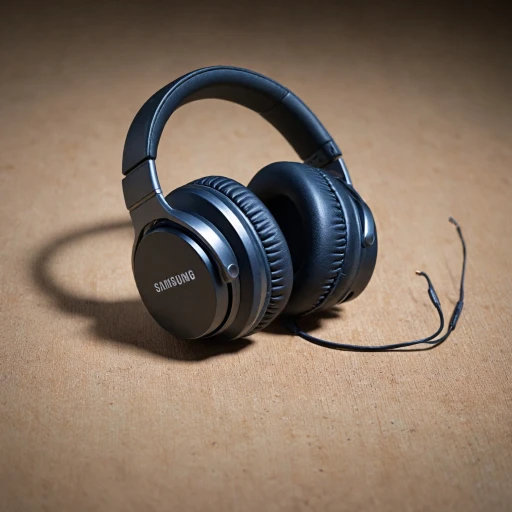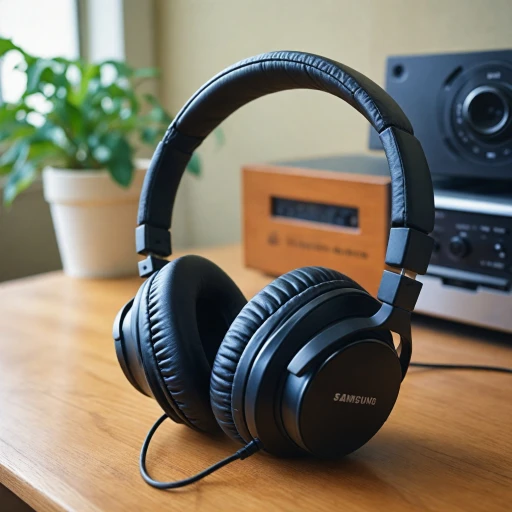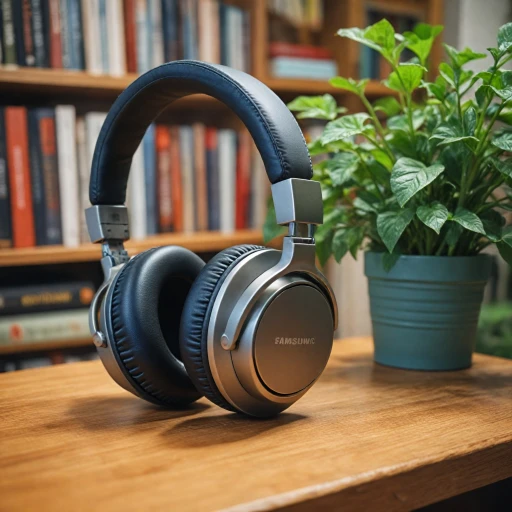Understanding Planar Magnetic Technology
The Intricacies of Planar Magnetic Technology
The world of audio enthusiasts has always been divided when it comes to headphone preferences, and planar magnetic headphones have sparked significant interest due to their distinct technology. These headphones utilize flat, magnetic drivers to deliver precise sound quality that appeals to audiophiles seeking refined audio experiences. With such a complex design, understanding the fundamentals of planar magnetic technology is crucial for anyone considering investing in these headphones. Planar magnetic headphones consist of a thin, flexible diaphragm infused with magnetic materials. This diaphragm is sandwiched between arrays of magnets, which respond to audio signals to create soundwaves. The result is incredibly detailed and accurate audio reproduction. Unlike dynamic drivers, which use a voice coil and cone mechanism, planar magnetic drivers provide a wider surface area for sound waves, often resulting in a more immersive listening experience. Notably, brands like Audeze and Hifiman have gained recognition for their innovative use of planar magnetic technology in models like the Audeze LCD and Hifiman Arya. These companies have mastered the art of constructing headphones that deliver impressive clarity, from subtle lows to electric highs, all without distortion. While the technical advantages of planar magnetic headphones are evident, their price point can be a consideration for potential buyers. They are generally positioned at a higher price range than regular headphones. Despite this, open-box options and entry-level models offer more affordable pathways into this world of sound, without compromising too heavily on quality. For those looking to explore how planar magnetic technology stands up against dynamic headphones, examining factors such as sound profile and noise cancelation effectiveness could be insightful, as noise cancelation plays a pivotal role in creating a superior audio experience. For more insights into headphone features, consider checking out exploring the features of kep headphones.The Role of Noise Cancelation in Modern Headphones
Rethinking Sound: The Impact of Noise Cancelation
In the realm of headphone technology, noise cancelation has emerged as a pivotal feature. Whether you are tuning into your favorite tracks on open planar headphones or catching every note on closed drivers, noise cancelation enhances the listening experience by minimizing unwanted ambient sounds.
Noise cancelation functions by using built-in microphones to capture environmental noise, creating opposing sound waves to neutralize it. This is crucial in contexts where external noises can overshadow audio clarity, such as during air travel or in bustling city environments. Technologies from brands like Hifiman and Audeze have been instrumental in integrating efficient noise cancelation mechanisms with planar magnetic headphones, ensuring that users enjoy superior sound quality with minimal distractions.
The implementation of noise cancelation varies between planar magnetic and dynamic driver headphones. For instance, planar magnetic ear headphones like the Audeze LCD or the Meze Audio lineup distinctively blend this technology with their magnetic drivers to deliver immersive audio experiences, while also addressing bass frequencies impeccably. On the other hand, dynamic driver technology, found even in entry level models, often provides a different approach with a potential trade-off in sound intricacies for cost-efficiency.
It's essential to consider various factors such as the regular price versus value, as well as whether an open box or closed model suits your needs best when evaluating noise cancelation in planar magnetic headsets. For a more in-depth understanding of how noise cancelation integrates with these advanced audio technologies, click to explore more.
Planar Magnetic vs. Dynamic: Which is Better for Noise Cancelation?
Evaluating Noise Cancelation in Different Headphone Technologies
When it comes to noise canceling capabilities, the debate often revolves around planar magnetic headphones versus dynamic driver models. Both technologies have their distinct attributes, which can influence their effectiveness in isolating ambient sound and delivering an immersive audio experience.
- Dynamic Drivers: Commonly found in many consumer headphones, dynamic drivers are known for their powerful bass response and affordability. They often leverage active noise cancelation (ANC) technology to mitigate external sounds effectively. As a result, dynamic driver headphones can offer a robust cancelation effect, especially in closed models.
- Planar Magnetic Headphones: While planar magnetic (or planar) headphones, such as those manufactured by companies like Audeze and HiFiMan, excel in audio detail and clarity, they may not inherently possess superior noise cancelation properties. The physics of planar drivers, with their larger, more intricate driver mechanisms, can make seamless integration with active noise cancelation more challenging. However, in open or semi-open formats, planar headphones provide an excellent soundstage and audio fidelity.
Price can also play a significant role. Planar magnetic headphones like the Audeze LCD series and the HiFiMan Arya generally come at a higher price point compared to regular dynamic models, which may affect purchasing decisions based on budget constraints. Despite this, the unmatched sound quality offered by planars often justifies the investment for audiophiles.
Whether to choose planar or dynamic headphones for noise cancelation ultimately depends on your priorities. If absolute noise isolation is key, dynamic models might be more appealing. Yet, for those prioritizing audio precision and are prepared to tackle the pairing of excellent sound quality with some level of ambient awareness, planar magnetic headphones remain a strong contender.
Challenges in Implementing Noise Cancelation in Planar Magnetic Headphones
Overcoming Obstacles in Noise Cancelation for Planar Magnetic Headphones
The implementation of noise cancelation in planar magnetic headphones is no small feat. While these headphones are celebrated for their exceptional sound quality, including deep bass and detailed mids, they present unique challenges compared to their dynamic driver counterparts. Planar magnetic drivers, like those used in brands such as Audeze and Hifiman, operate on different principles than dynamic drivers. They rely on a thin, flat diaphragm embedded with electrical conductors, which vibrates to produce sound when an electrical current passes through it. This design offers unparalleled audio precision, ideal for audiophiles seeking high-fidelity sound. However, the very mechanics that make planar headphones excellent for audio can complicate noise cancelation efforts. The diaphragm's large surface area, while advantageous for sound production, can make it more susceptible to environmental noise. To further complicate matters, the open-back design common in headphones like the Meze Audio Empyrean or Hifiman Arya introduces an additional challenge, as it allows more outside sound to enter. Integrating effective noise cancelation requires delicate balancing. Engineers must fine-tune the filtering and isolation mechanisms to ensure the headphones don't compromise the audio quality that planar magnetic technology promises. This is particularly critical for high-end models such as the Dan Clark Audio Aeon or Audeze LCD series, where the focus is on delivering impeccable sound without the disturbance of ambient noise. Furthermore, the added components for active noise cancelation (ANC), such as microphones and sound processors, can increase the headphones' weight, affecting comfort during prolonged use. This consideration is crucial given the premium price of planar headphones, with consumers expecting supreme comfort and auditory experience. Ultimately, while the challenges in implementing noise cancelation in planar magnetic headphones are significant, ongoing advancements in technology continue to make strides. As both planar magnetic and noise cancelation technologies evolve, the hope is to bring about more effective solutions that deliver outstanding sound in all settings.Choosing the Right Planar Magnetic Headphones for Your Needs
{ "result": "Navigating Your Planar Magnetic Headphone Choices
\nPurchasing the right planar magnetic headphones matches your auditory preferences and budget. Planar magnetic headphones often stand out due to their enhanced sound clarity and expansive audio stage, and knowing what to look for can make all the difference.
\nHere's what you should consider when exploring the options:
\n- \n
- Sound Quality: Planar magnetic headphones like the Audeze LCD series or HiFiMan Arya provide a balanced and rich sound, emphasizing clarity over exaggerated bass – perfect for classical and jazz enthusiasts. \n
- Type of Enclosure: Planar magnetic headphones come in open-back or closed-back designs. Open-back models, like the HiFiMan Arya Organic, offer a wider sound stage, whereas closed-back models provide better sound isolation. \n
- Comfort and Fit: Long listening sessions require comfortable ear headphones. Think about models that include adjustable headbands and ear pads for prolonged enjoyment without discomfort. \n
- Durability and Build: Check the materials and overall build of the headphones. Brands like Dan Clark Audio provide robust designs that ensure longevity. \n
- Pricing: The price can vary significantly. Entry-level options might fit better within tighter budgets, while premium offerings deliver top-tier sound quality. Consider open box deals or regular sales to get more value for your investment. \n
- Brand Reputation: Reputable brands such as Audeze and Meze Audio are known for their quality and reliability in delivering breathtaking audio experiences. \n
Balancing your preferences in these areas helps you make informed decisions. As the audio landscape continues to evolve with the integration of noise cancelation technology and advancements in planar magnetic drivers, staying updated on developments is vital for audiophiles seeking the best experience." \n}
Future Trends in Planar Magnetic and Noise Cancelation Technologies
Anticipating Advancements in Noise Cancellation Systems
In the ever-evolving landscape of headphone technology, the future of planar magnetic headphones, especially in conjunction with noise-canceling features, carries significant promise. Companies continually refine magnetic ear designs and develop more sophisticated noise management systems, exploring how to optimize the planar drivers for increased performance.Existing models from brands renowned for their high-fidelity sound, like the Audeze LCD series or the Hifiman Arya, are expected to see advancements in their noise-cancellation functionalities. These improvements will aim to maximize what planar drivers inherently do best — provide detailed and rich audio experiences — while minimizing external distractions.
Additionally, as manufacturers like Meze Audio and Clark Audio look to integrate more intelligent technology into their headphones, the potential for adaptive noise-canceling algorithms that tailor to the listener's environment will likely rise. This development not only benefits everyday users but also audio professionals seeking precise audio response in varying acoustics.
Ongoing competition between planar magnetic and dynamic driver technologies will inevitably fuel innovation and drive down regular prices, potentially making advanced options like open and closed-back planar magnetic models more accessible. With innovations in material and driver technology also on the horizon, users may see a growth in the entry-level segment that does not compromise on quality — a significant step towards wider adaptability and user base expansion.
Ultimately, as brands like Dan Clark Audio and Hifiman continue to reveal updated models, the market will see greater options for open box and new technologies, perfectly synchronizing sound quality, noise isolation, and consumer price expectations.
